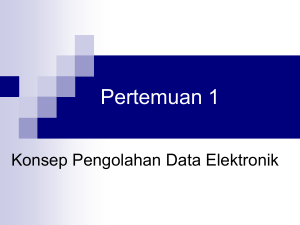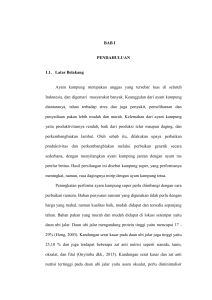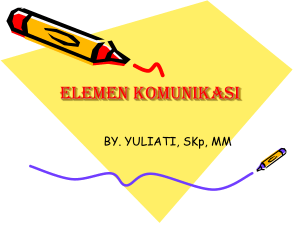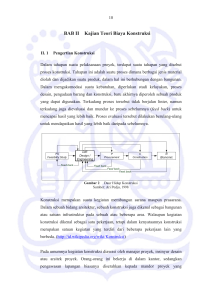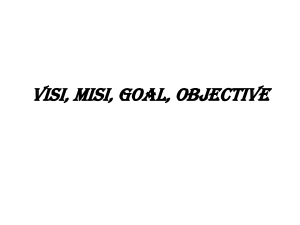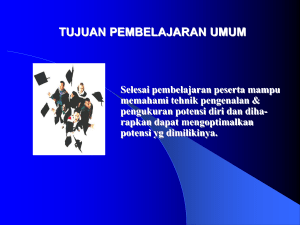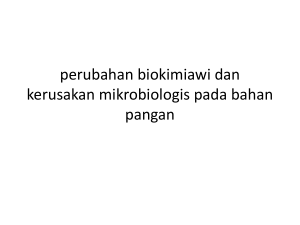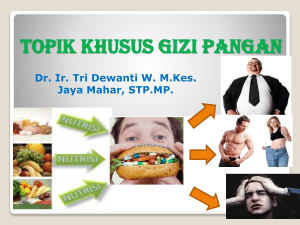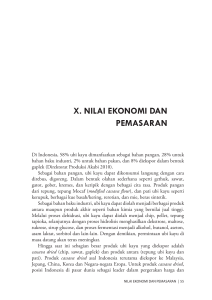Pertemuan 7-Umbi
advertisement
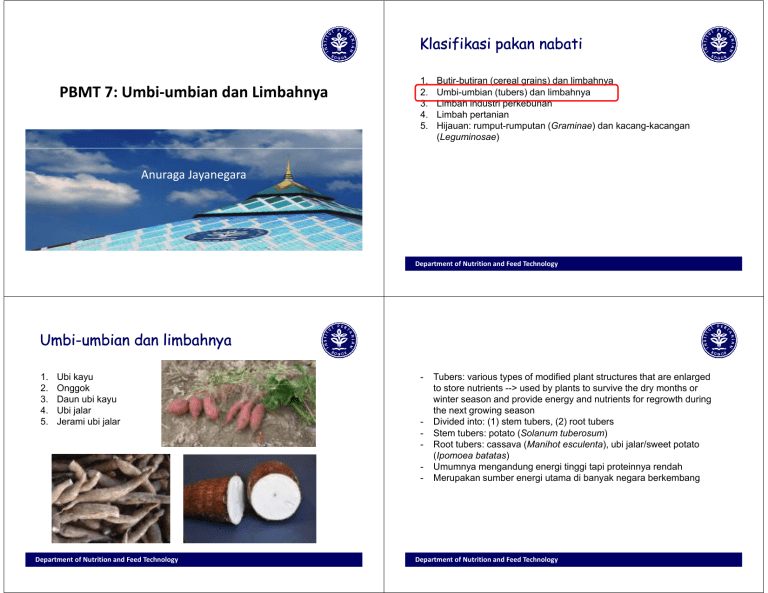
Klasifikasi pakan nabati PBMT 7: Umbi-umbian dan Limbahnya 1. 2. 3. 4. 5. Butir-butiran (cereal grains) dan limbahnya Umbi-umbian (tubers) dan limbahnya Limbah industri perkebunan Limbah pertanian Hijauan: rumput-rumputan (Graminae) dan kacang-kacangan (Leguminosae) Anuraga Jayanegara Department of Nutrition and Feed Technology Umbi-umbian dan limbahnya 1. 2. 3. 4. 5. Ubi kayu Onggok Daun ubi kayu Ubi jalar Jerami ubi jalar - - Department of Nutrition and Feed Technology Tubers: various types of modified plant structures that are enlarged to store nutrients --> used by plants to survive the dry months or winter season and provide energy and nutrients for regrowth during the next growing season Divided into: (1) stem tubers, (2) root tubers Stem tubers: potato (Solanum tuberosum) Root tubers: cassava (Manihot esculenta), ubi jalar/sweet potato (Ipomoea batatas) Umumnya mengandung energi tinggi tapi proteinnya rendah Merupakan sumber energi utama di banyak negara berkembang Department of Nutrition and Feed Technology 1. Singkong (Manihot esculenta) - Di Indonesia singkong merupakan makanan pokok urutan ke-3 setelah beras dan jagung - Tinggi kandungan pati (BETN ca 83%) - Kandungan protein sangat rendah - Defisien asam amino bersulfur - Mengandung racun asam sianida (HCN) dalam bentuk glikosida sianogenik - Penggunaan: unggas 5-10%, babi 4070%, ruminan 40-90% - Glycosides: contain substances linked by an ether bond (-o-) with a carbohydrate fraction --> non-carbohydrate fraction is called an aglycone - Cyanogenic glycosides: contain cyanide as part of the aglycone - Plants containing glycosides also contain enzymes to hydrolyze them, but in different compartments of the plant cell --> cyanide is not released until the plant cells are disrupted - Processing may reduce its cyanide content - When the roots are chopped, pulped or mashed, the cell structure is macerated and the glycoside and enzymes come together, releasing cyanide Plant enzymes Cyanogenic glycosides -----> aglycone + carbohydrate Plant enzymes Aglycone -----> HCN + nontoxic compounds Department of Nutrition and Feed Technology Department of Nutrition and Feed Technology - HCN ionic form is cyanide (CN-) - Cyanide is volatile --> when the cassava roots are pulped and sun dried, free cyanide is formed, much of which is then volatilized into the air - Extraction of the pulped root with water will also wash out much of the cyanide - Small amounts of residual cyanide may remain after processing --> methionine and vitamin B12 function in the detoxification and excretion of cyanide --> the requirements for these nutrients are elevated with cassava-based diets Department of Nutrition and Feed Technology Department of Nutrition and Feed Technology 2. Onggok - Merupakan limbah pabrik tapioka - Angka konversi ubi kayu menjadi onggok berkisar antara 60-65% - Kadar HCN lebih rendah vs singkong - Penggunaan: unggas <5%, babi 2530%, ruminan 40% Department of Nutrition and Feed Technology 3. Daun singkong (ubi kayu) Department of Nutrition and Feed Technology 4. Ubi jalar (Ipomoea batatas) - Dari tanaman singkong, 10-40% terdiri dari daun - Tinggi protein dengan kualitas yang baik (75% protein murni) - Defisien asam amino esensial mengandung sulfur, i.e. metionin dan sistin - Mengandung HCN: pada daun muda 427-542 mg/kg, daun tua 343-379 mg/kg - Banyak varietasnya - Merupakan sumber energi - Ubi jalar yang berwarna kuning mengandung provitamin A dan karotenoid yang cukup - Asam amino pembatas: leucine - Kandungan protein rendah - Dapat menggantikan jagung 50% di ransum ruminansia - Mengandung tripsin inhibitor - Left over: jerami ubi jalar Department of Nutrition and Feed Technology Department of Nutrition and Feed Technology Soal tantangan: Seorang peternak mempunyai bahan pakan berupa gaplek, daun singkong dan jerami padi. Adapun kandungan protein kasar dan energi (dalam TDN) masing-masing bahan adalah sebagai berikut: Gaplek Daun singkong Jerami padi PK (%) 3 24 4 TDN (%) 79 72 52 Peternak tersebut ingin membuat ransum dengan kandungan PK = 15% dan TDN = 68%. Berapakah proporsi masing-masing bahan tersebut agar komposisi ransumnya sesuai dengan yang diinginkan? Jawaban Department of Nutrition and Feed Technology Department of Nutrition and Feed Technology Thank you for your attention! “Sukses atau tidaknya seseorang selama hidup dilihat dari akhir hayatnya“ Department of Nutrition and Feed Technology Department of Nutrition and Feed Technology
